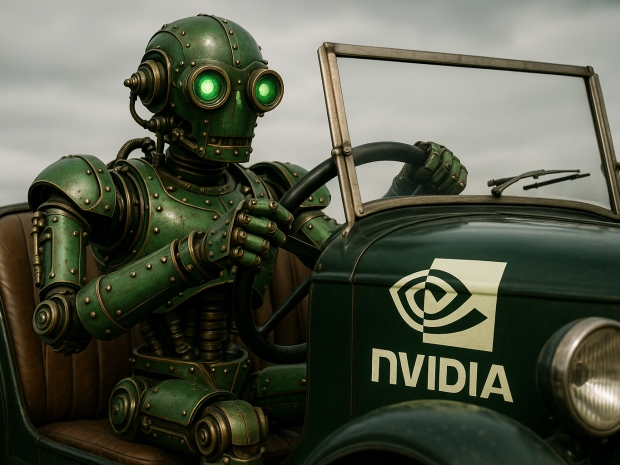According to Nvidia chief executive Jensen Huang, robots could be the outfit's biggest money-spinner after AI, and autonomous vehicles will be their first real-world breakout.
Speaking to the gathered throngs at this year’s GTC, he said: "The era of autonomous vehicles has arrived, and all cars will have autonomous driving functions in the next 20 years."
That may sound like classic Huang hyperbole, but Nvidia is throwing serious silicon at the problem. It’s already peddling its DRIVE AGX Orin and the newer DRIVE AGX Thor systems-on-chip, designed to cram driver assistance and AI cockpits into one allegedly safe package.
The company has cosied up with MediaTek, playing tag-team on everything from titchy AI supercomputers to high-end infotainment. They’ve cooked up the GB10 superchip powering Project DIGITS, which MediaTek calls the world’s smallest AI supercomputer, and it's slowly trickling into gear.
The two are slinging a smart cockpit solution called C-X1 at car makers, promising to start deliveries later this year and bring in some dosh by next. Built using a 3nm process, the C-X1 marries MediaTek’s Dimensity Auto kit with Nvidia’s Blackwell GPU and deep learning accelerators. It claims to offer enough AI muscle to run future car cockpits without breaking a sweat.
In the name of in-car gaming, the C-X1 also boasts Nvidia’s RTX ray tracing tech, letting punters play 3A-level titles with moody lighting while stuck in traffic.
According to MediaTek, pairing the C-X1 with Nvidia's DRIVE AGX Thor SoC forms a centralised platform that can juggle various vehicular functions. Both chips are designed to run Nvidia’s DriveOS and share resources to keep everything in sync.
Nvidia’s DRIVE Hyperion platform remains its flagship play in the autonomous vehicle world. Touted as the only end-to-end system of its kind, it includes the Orin or Thor silicon, reference boards, and the DriveOS operating system. Carmakers such as Mercedes-Benz, Volvo, and Jaguar Land Rover are allegedly onboard.
The latest version of Hyperion, launched earlier this year, runs on the Blackwell-based Thor chip and is pitched as modular, expandable, and future-proof enough to survive the next wave of chip updates.
Huang is convinced that future autonomous machines will lean on a foundation model of physical AI to make sense of the real world. He insists that the DRIVE lineup is purpose-built for this shift, even if the actual robots are still more concept art than reality.




